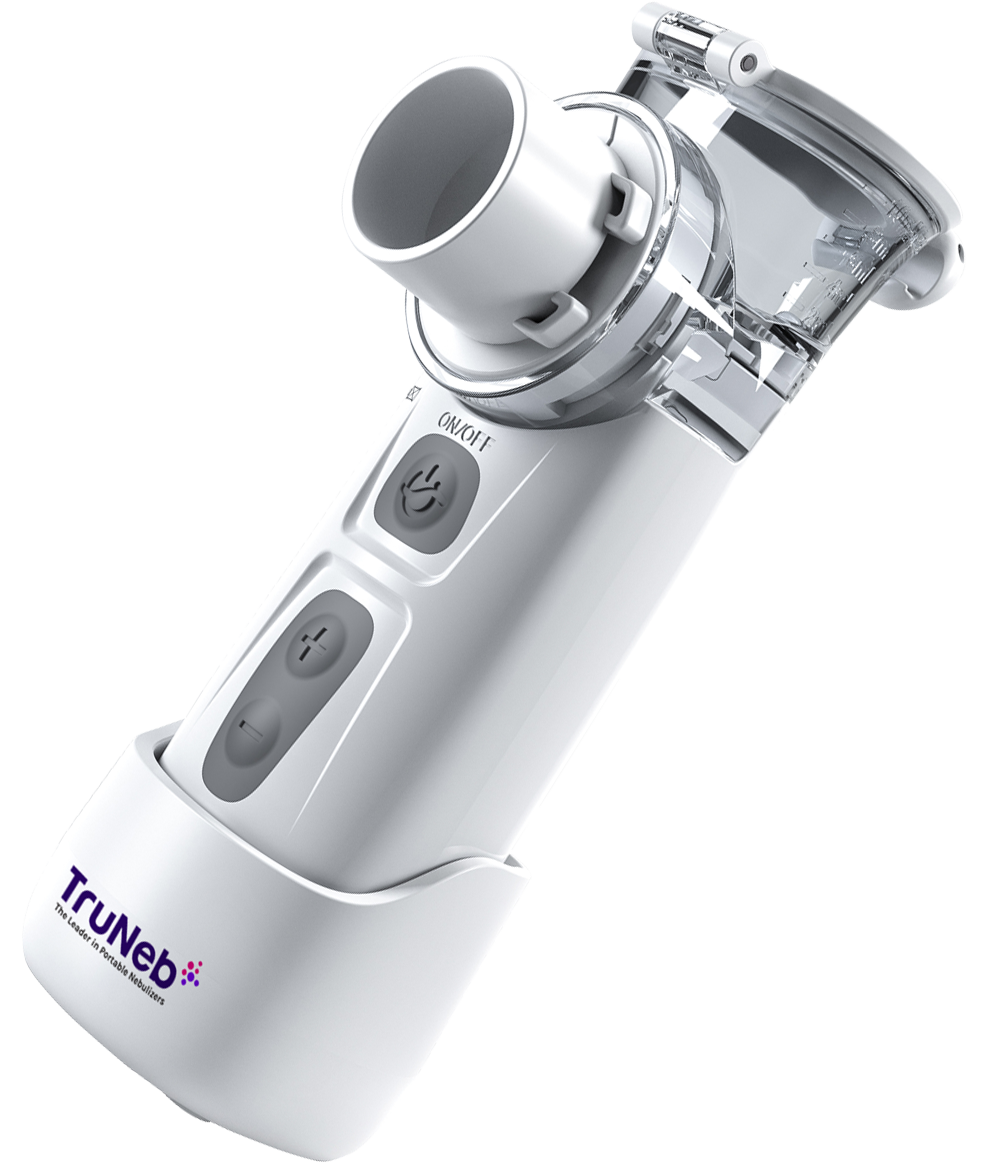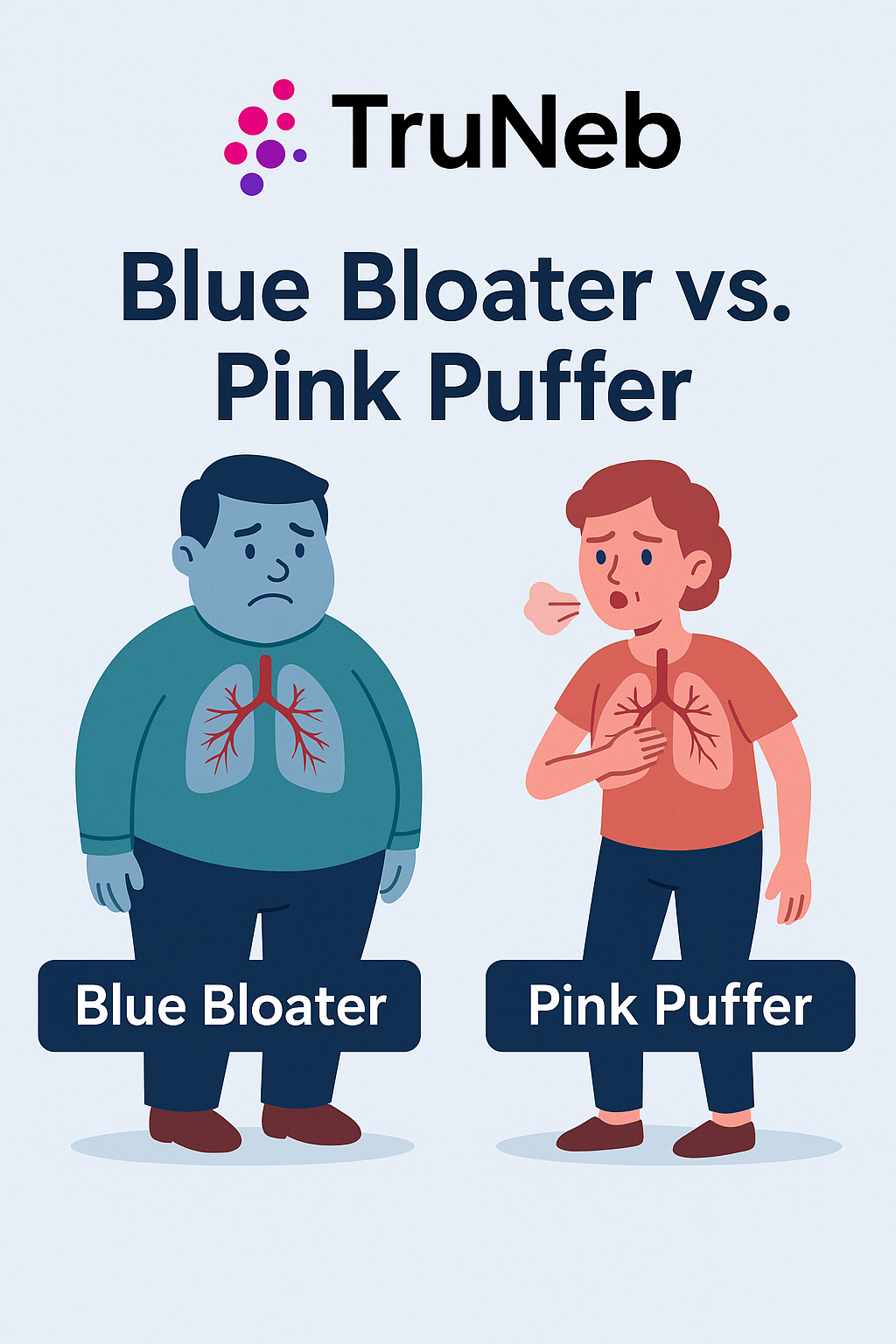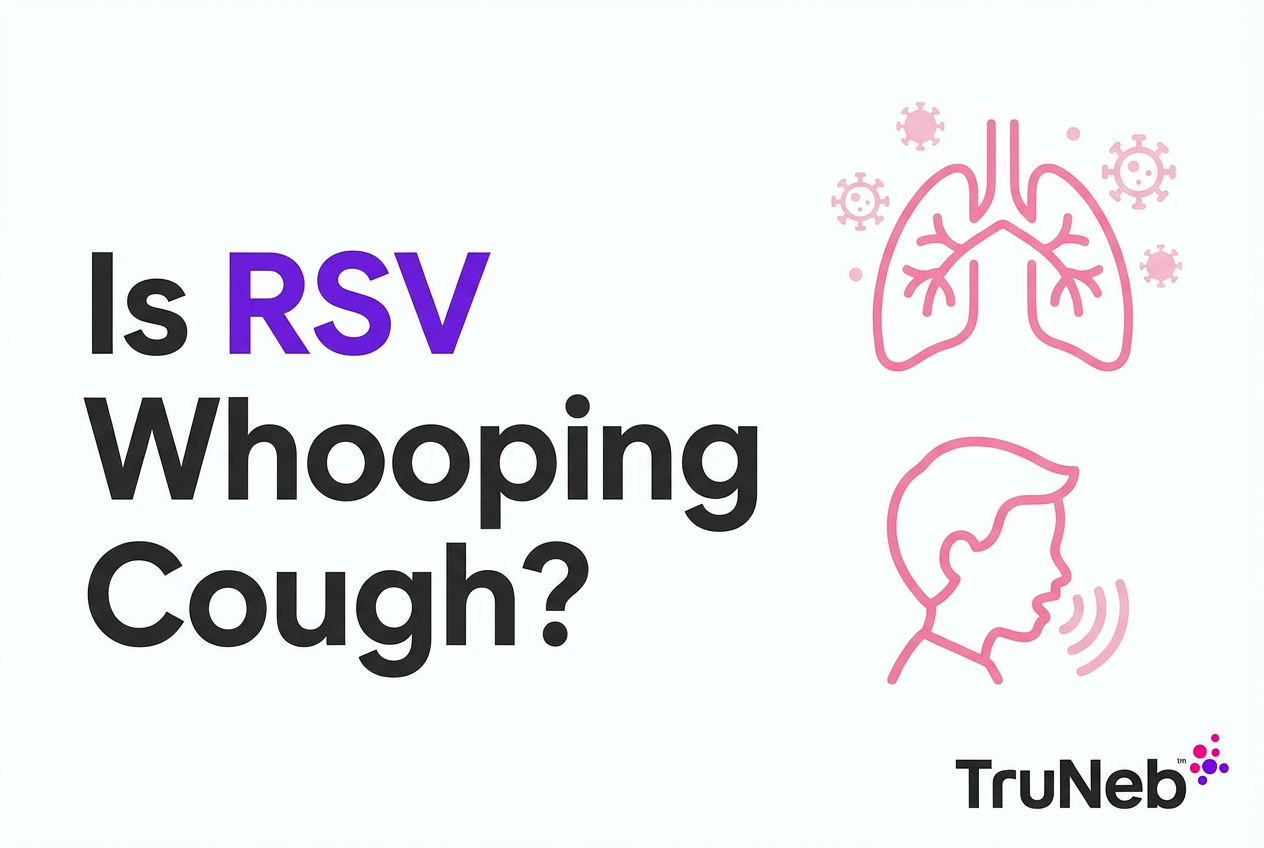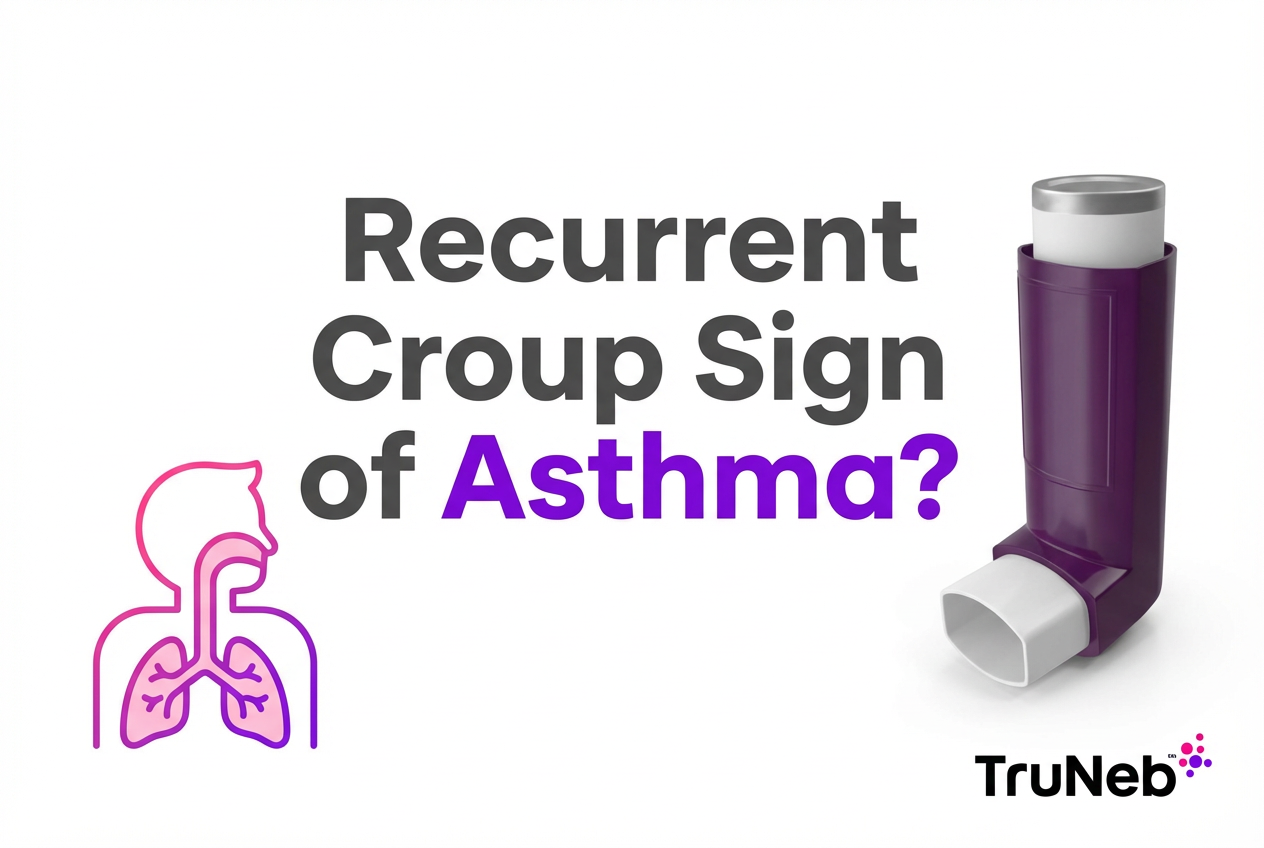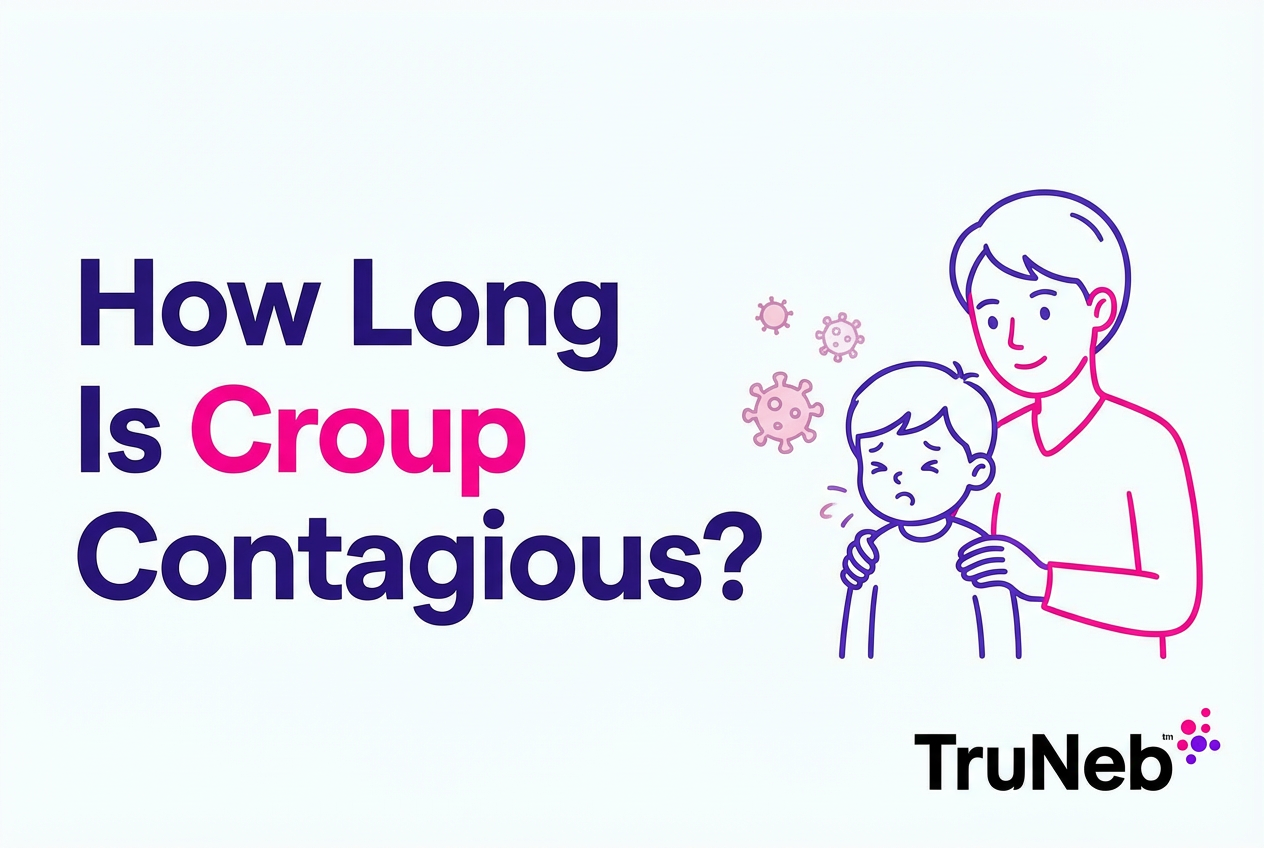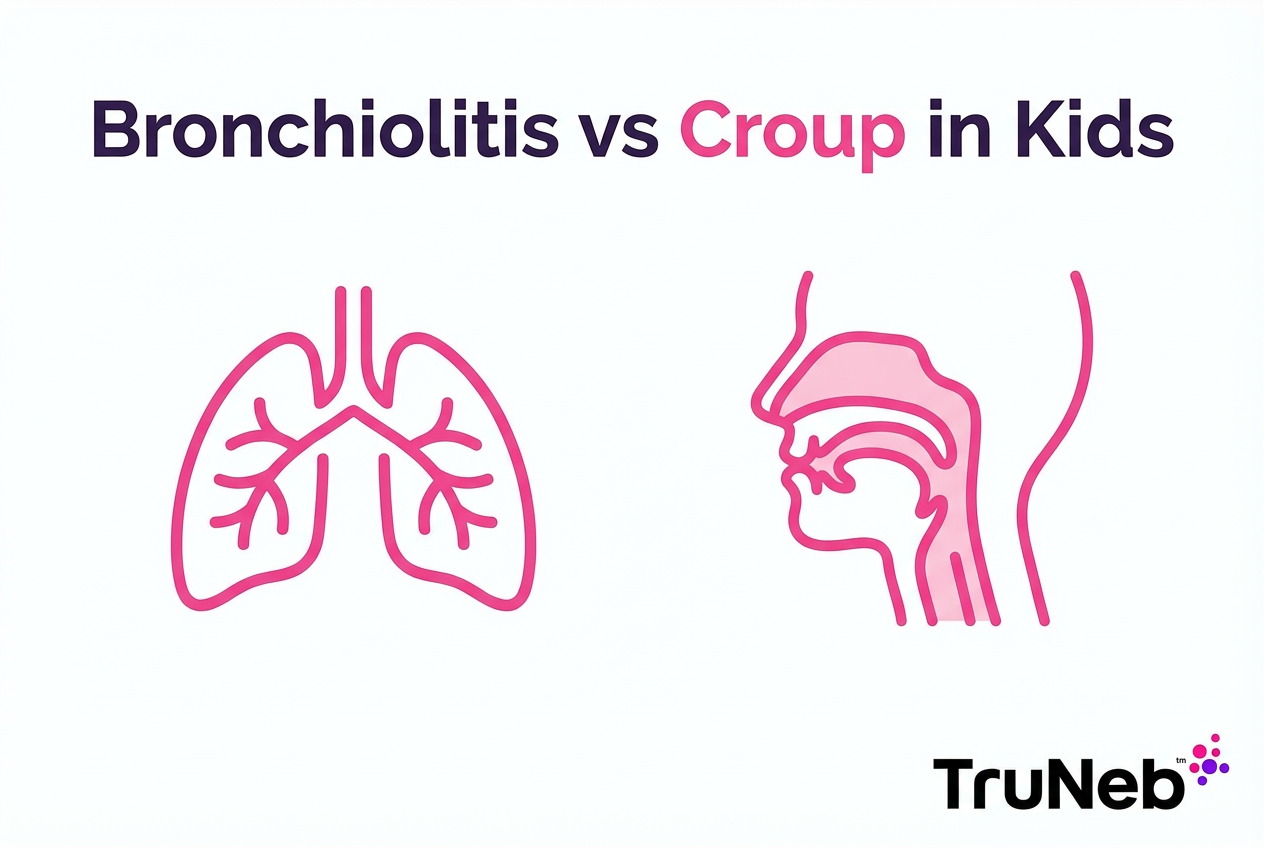On this page
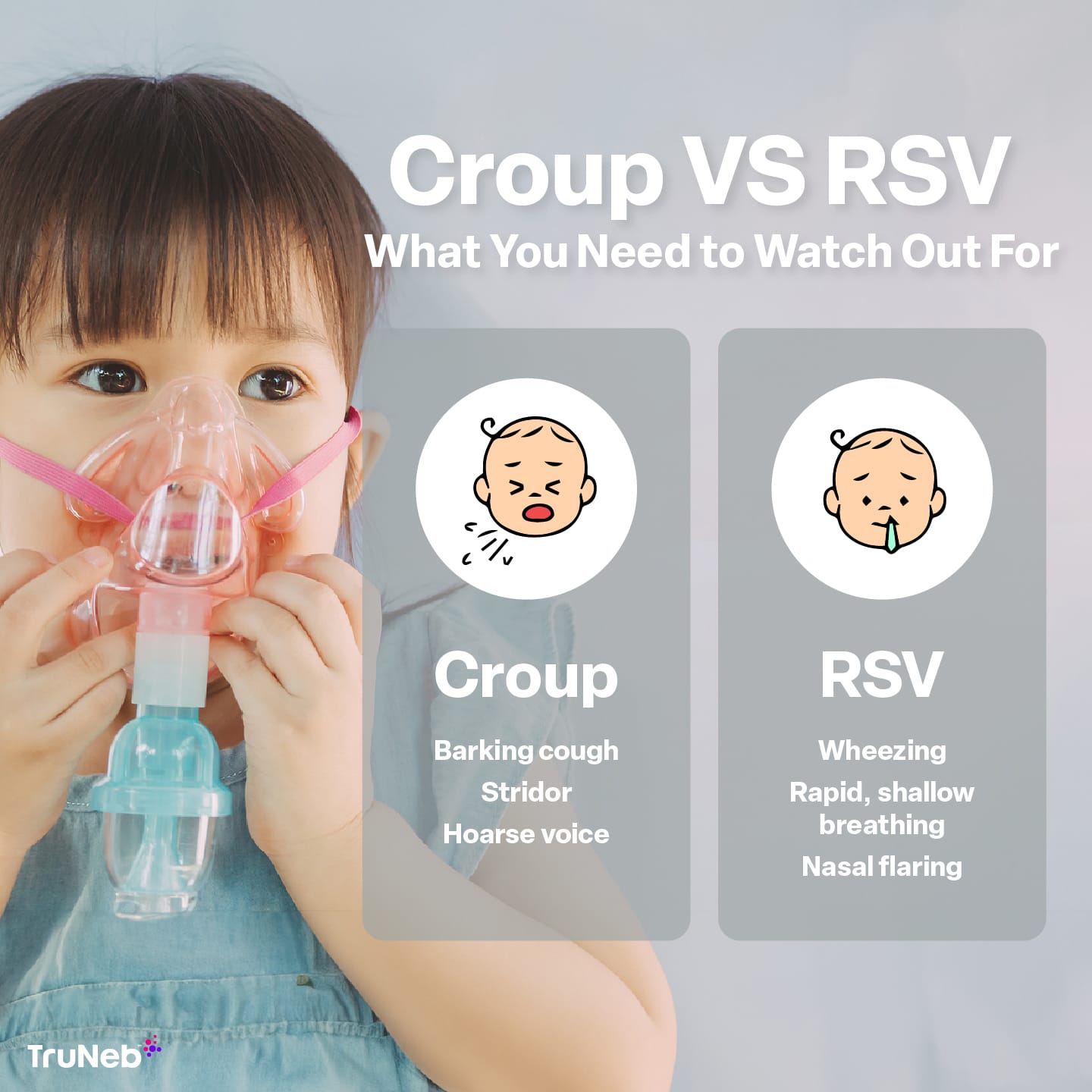
If you're a parent, you've probably heard the terms "croup" and "RSV" talked about by friends, family, or your pediatrician – especially during cold and flu season. These common childhood respiratory illnesses can be scary, leaving parents wondering what they're dealing with and how to help their little ones. In this article, we'll dive deep into croup vs RSV, comparing their symptoms, causes, and treatments – so you're equipped with as much helpful information as possible.
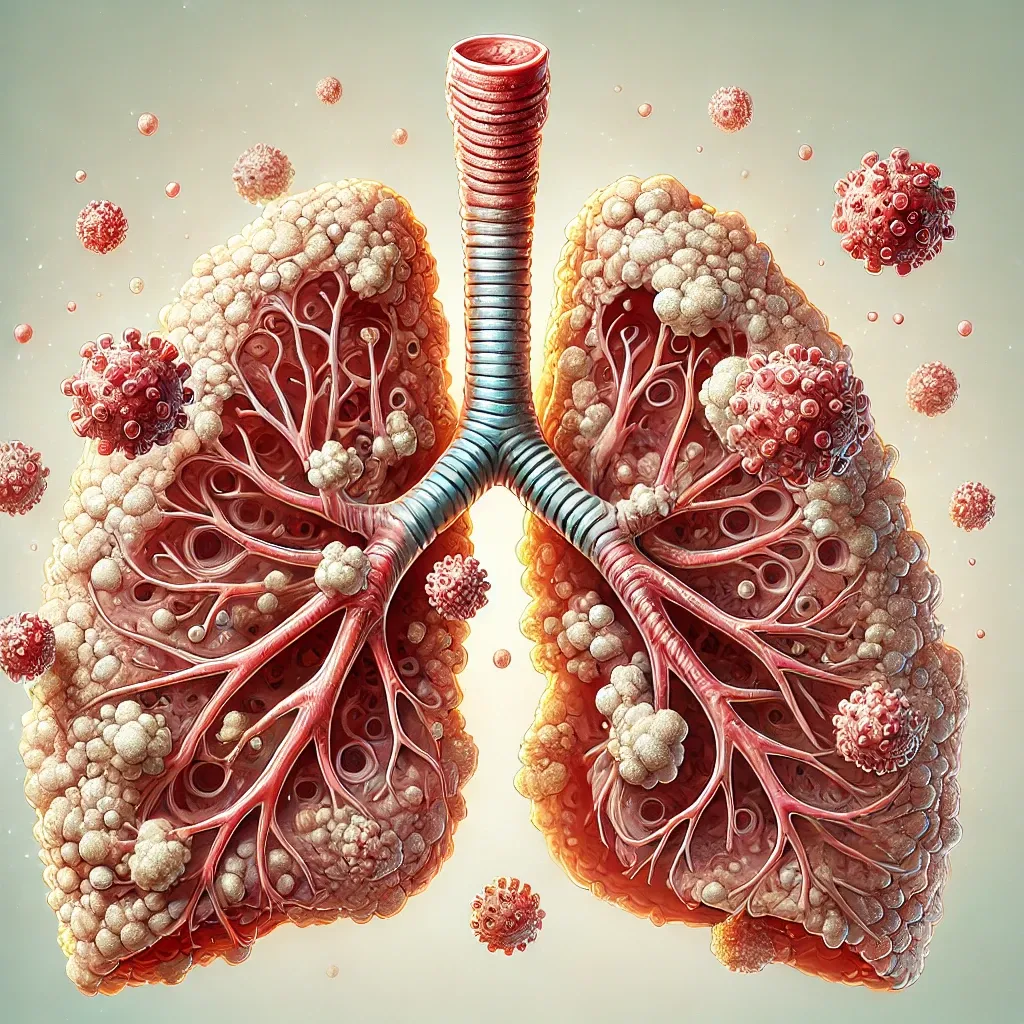
Understanding Croup: The Infamous Barking Cough
Let's start with croup, often recognized by its distinctive "barking" cough that might remind you of a seal's bark. Once you hear it, you'll recognize it.
What exactly is croup?
Croup is the nickname for laryngotracheobronchitis, which is swelling in the upper airway. It specifically affects the voice box (larynx) and windpipe (trachea). This swelling narrows the airway, making it harder for air to get through and resulting in that characteristic barking cough.
Who does croup affect?
Croup loves to target the little ones:
- Most common in children 6 months to 3 years old
- Can affect kids up to 5 years old
- Rarely seen in older children or adults
What causes croup?
Usually, viruses are the culprits behind croup. The most common troublemakers include:
- Parainfluenza viruses (the most frequent culprit)
- Respiratory syncytial virus (RSV) – yes, it can cause croup too!
- Influenza viruses
- Adenoviruses
Recognizing the signs
Besides the telltale barking cough, keep an eye out for:
- Stridor: A high-pitched, squeaky sound when breathing in
- Hoarse voice
- Difficulty breathing
- Mild fever
- Symptoms often worsen at night
- Blue lips (cyanosis, a sign of decreased oxygen levels in the body)
Croup can be scary for both kids and parents, but in most cases, it's manageable at home. However, always trust your instincts. If your child is having severe difficulty breathing or you're concerned, don't hesitate to seek medical attention.
Let's explore RSV and how it differs from croup, giving you a clearer picture of these common childhood respiratory foes.
A Deeper Dive Into RSV
Now let's turn our attention to RSV, or Respiratory Syncytial Virus. While it might not have croup's dramatic bark, RSV can be just as troublesome (and often worse) – especially for the tiniest lungs in the family.
What exactly is RSV?
RSV is a common, highly contagious virus that infects the lungs and breathing passages, causing inflammation and mucus production that can make breathing difficult, especially for babies and young toddlers.
Who does it affect?
RSV doesn't discriminate – it can infect people of all ages. However, it's particularly risky for:
- Infants, especially those under 6 months
- Premature babies
- Children under 2 with chronic lung or heart conditions
- Older adults (65+)
- People with weakened immune systems
What causes RSV?
Unlike croup, which can be caused by various viruses, RSV is caused by a single virus – the respiratory syncytial virus itself. It's highly contagious and spreads through:
- Respiratory droplets from coughs or sneezes
- Close contact with infected individuals
- Touching contaminated surfaces and then touching your face
Recognizing the signs
RSV often starts out masquerading as a common cold, but keep an eye out for:
- Runny or stuffy nose
- Coughing and sneezing
- Fever
- Decreased appetite
- Wheezing
- Difficulty breathing
In some cases, RSV can lead to more serious conditions like bronchiolitis (inflammation of the small airways) or pneumonia. Watch for signs of increased work of breathing, including:
- Rapid, shallow breathing
- Nasal flaring
- "Caving in" of the chest when trying to breathe
- Retractions around the ribs
While RSV can be scary, especially for parents of infants, remember that most cases can be managed by a pediatrician. But if you notice signs of difficulty breathing, dehydration, or something just doesn't feel right, always seek emergency medical attention. Your instincts are one of the best tools you have.
Croup vs RSV Side by Side
Now that we've met both croup and RSV, let's put them side by side to see how they stack up.
Affected areas of the respiratory system
Croup: Primarily affects the upper airway – the voice box (larynx) and windpipe (trachea). It's like the trouble is concentrated at the top of the respiratory "tree."
RSV: Can affect both upper and lower airways, often causing more issues in the lower respiratory tract – the bronchi and lungs. It's like the virus is attacking the whole respiratory "tree," from top to bottom.
Signs & symptoms checklist
Croup:
- Barking cough (think seal noises)
- Stridor (high-pitched sound when breathing in)
- Hoarse voice
RSV:
- Wheezing (whistling sound, usually when breathing out)
- Rapid, shallow breathing
- Nasal flaring and "caving in" of the chest or ribs when trying to breathe
Typical age of onset and progression
Croup:
- Most common in children 6 months to 3 years old
- Symptoms often worsen at night
- Usually improves within 3-5 days
RSV:
- Can affect all ages, but most severe in infants under 1 year
- Symptoms typically worsen around day 3-5 of illness
- Can last 1-2 weeks
How long are croup and RSV contagious?
Both croup and RSV are highly contagious and spread through similar ways:
- Respiratory droplets from coughing or sneezing
- Close contact with infected individuals
- Touching contaminated surfaces and then touching your face
Croup: Usually contagious for about 3 days after symptoms start or until the fever is gone.
RSV: Can be contagious for 3-8 days, but some infants and people with weakened immune systems can spread the virus for up to 4 weeks.
Getting a diagnosis
Playing detective with respiratory illnesses can be tricky, but here's how healthcare providers usually crack the case.
Clinical examination for croup
Doctors often diagnose croup based on the very recognizable barking cough and stridor. They'll also:
- Listen to your child's breathing with a stethoscope
- Check for signs of breathing difficulty
- Look at the throat for redness or swelling
- In some cases, they might order a neck X-ray to rule out other causes of airway obstruction
Testing for RSV
RSV can be trickier to pin down. Doctors might use:
- Rapid RSV tests: A quick swab of the nose can detect RSV antigens
- PCR tests: More accurate but take longer to get results
- Blood tests: To check for signs of infection
- Chest X-rays: If pneumonia is suspected
Is it croup, RSV, or something else?
Sometimes, other respiratory illnesses can crash the party, making a diagnosis more challenging. Here's how doctors distinguish them:
Whooping cough (pertussis):
- Characterized by fits of rapid coughing followed by a "whoop" sound
- Cough can last for weeks or months
- Confirmed with a specific lab test
Bacterial tracheitis:
- Can look like severe croup but is caused by bacteria
- Usually comes with high fever and more severe symptoms
- May require different treatment (antibiotics)
While it's good to be informed, always consult with a healthcare provider for proper diagnosis and treatment. They're the real experts in distinguishing between these tricky respiratory conditions.
Treating Croup vs RSV
When it comes to treating croup and RSV, the approaches can be quite different. Let's break it down:
Managing croup at home and medical interventions
Croup often sounds worse than it is, and a lot of the time it can be managed at home. Here's what you can do:
Home remedies:
- Cool mist humidifier
- Sitting in a steamy bathroom
- Breathing cool night air outside
Medical treatments:
- Steroids: These reduce inflammation in the airway, helping your child breathe easier
- Nebulizer treatments: In more severe cases, inhaled medications can provide quick relief
Home management for RSV and signs you need more serious care
RSV treatment is mostly about supportive care:
- Plenty of fluids to prevent dehydration
- Nasal suctioning to clear those stuffy airways
- Over-the-counter fever reducers (but always check with your doctor first!)
- Hypertonic saline nebulizers (if your doctor gives you the green light)
When does RSV require a hospital stay? Watch for:
- Difficulty breathing or very rapid breathing
- Signs of dehydration
- Low oxygen levels
- Lethargy or extreme fatigue
In the hospital, treatment might include:
- Oxygen therapy
- Chest physiotherapy
- Hypertonic saline for bronchiolitis
- Nebulizer therapy
- IV fluids
- More intensive respiratory support if needed
Comparing treatments
Croup:
- Steroids usually start working within 6 hours
- Most kids improve within 24-48 hours of starting treatment
- The barking cough might linger for a week or so
RSV:
- Supportive care helps manage symptoms but doesn't shorten the illness
- Most cases resolve in 1-2 weeks
- More severe cases might take longer to fully recover
Of course, every child is different. Always follow your healthcare provider's advice for the best treatment approach.
When To Go to the Emergency Room
| Red-Flag Sign | What It Looks Like / Why It’s Serious |
|---|---|
| Visible struggle to breathe | Chest or ribs “sucking in,” belly muscles working hard. Child refuses to lie flat because breathing is harder in that position. |
| Blue or grayish color | Lips, fingernails, or skin around the mouth turn bluish—clear sign of low oxygen and need for immediate medical help. |
| Stridor at rest | Harsh, high-pitched noise while breathing even when the child is calm—not just when crying. |
| Excess drooling / trouble swallowing | Indicates severe throat swelling when combined with breathing difficulty. |
| Unusual sleepiness or confusion | Child is hard to wake, overly drowsy, or not responding normally—possible sign of low oxygen or exhaustion from breathing effort. |
Preventing RSV, Croup and Other Respiratory Illnesses
An ounce of prevention is worth a pound of cure, especially when it comes to respiratory illnesses.
Hygiene practices and reducing exposure to respiratory droplets
Think of this as your first line of defense:
- Frequent hand washing: Sing "Happy Birthday" twice while scrubbing!
- Avoid touching your face: Easier said than done, we know
- Cover coughs and sneezes: Teach kids the "vampire cough" into their elbow
- Keep sick kids home: It's not fun, but it helps prevent spread
Immunization options
In 2023, RSV immunization/antibody treatments finally became available for infants and older adults. Croup does not have a vaccine because it can be caused by several different viruses.
Here are some additional vaccines for added protection:
- Flu shot: Can prevent influenza-related croup
- DTaP vaccine: Protects against pertussis (whooping cough), which can sometimes be confused with croup
- RSV preventive antibodies: Available for high-risk infants
New Trends in Respiratory Viruses
The pandemic has shaken things up quite a bit in the world of viruses and healthcare including changes in virus behavior, shifts in typical seasonal patterns
We’ve seen increased activity for RSV and influenza on top of the COVID-19 – earning the nickname “tripledemic.” Because of the overlapping symptoms of these viruses, diagnosis and treatment can be trickier and take longer.
Avoiding contact with sick people/staying home when you’re sick and taking preventative measures is your best bet for avoiding illness for as long as possible.
Croup vs RSV – Keeping Your Little One Healthy and Safe
As we wrap up our deep dive into croup and RSV, let’s recap on the most important key points:
- Croup and RSV are common childhood respiratory illnesses, each with its own distinct characteristics.
- Early recognition of symptoms and prompt treatment can make a big difference in outcomes.
- Prevention strategies, including good hygiene and vaccination, play a crucial role in keeping these illnesses at bay.
- While these conditions can be scary, most children recover well with proper care and support.
Knowledge is power when it comes to managing your child's health. By understanding the differences between croup and RSV, you're better equipped to recognize symptoms early and seek appropriate care when needed.
Depending on symptoms and medical history, nebulizer treatments can be an important part of the recovery process. However, traditional nebulizers with their bulky compressors and tangled tubing can be inconvenient and frustrating to use.
That's where our portable nebulizer for kids & adults comes in. It's a hassle-free solution for respiratory treatments. Our neb is perfect for people who want to take their treatments on the go, or simply want a quiet, convenient way to take their breathing medications at home. With the TruNeb™, managing respiratory health becomes a little bit easier.

